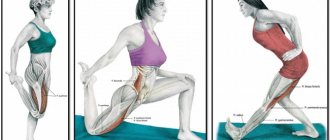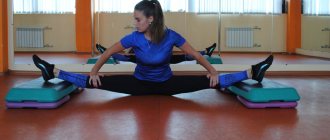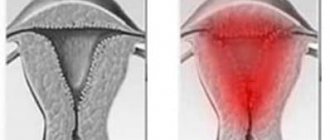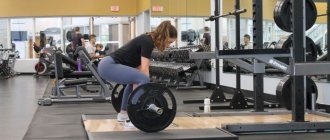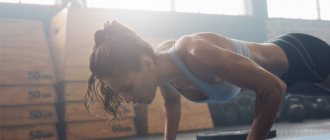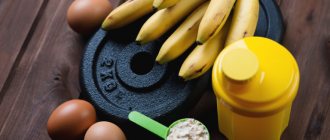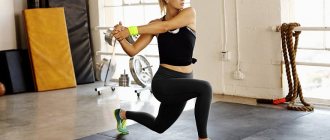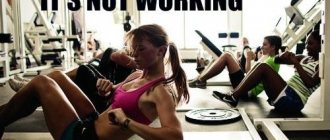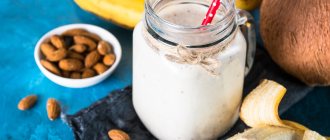For a long time, there was an opinion that muscle growth is due solely to its destruction during training and recovery after. Actually this is not true. Hyperplasia is a popular, but not the only technique that allows you to achieve weight gain. In the initial stages of training, while the nervous system is under stress and untrained muscle fibers differ from each other in length and recovery rate, microtraumas really help the body “grow”.
Over time, the body quickly adapts to the stress. Once the fibers are aligned along their length, they stop tearing and athletes require other factors to achieve progress.
Which ones exactly? We’ll look at how muscles grow after training in beginners and experienced athletes, as well as how long it takes for muscles to grow after training, in this article!
The mechanism of muscle growth: do muscles grow after training?
Muscles are a set of long fibers consisting of cells - myotubes, which promote their contraction and satellite cells, which ensure regeneration.
The growth of muscle mass is responsible for the processes of hypertrophy and hyperplasia, which are triggered in the body during exercise and rest after training under the influence of certain factors.
The main “building materials” for launching these processes are a set of components entering the blood: free creatine, hydrogen ions, anabolic hormones, amino acids, etc.
How muscles grow after training in beginners - men and women
From the beginning of the training process until the personal genetic limit is reached, the process of hypertrophy gain - muscle growth due to an increase in the size of the individual cells and fibers that make them up.
The determining factors that trigger hypertrophy are muscle stimulation during exercise and full recovery during rest.
In order to understand how long it takes for muscles to grow after training, you need to understand the processes of physiology. During training, due to the stress received by the central nervous system, creatine and hydrogen ions enter the blood, which contribute to the launch of the “supercompensation” effect (overgrowth of microtraumas with some “reserve”). During rest, amino acids are produced and a basic restorative background is created for the growth of glycolytic (fast) fibers.
How many days after training your muscles grow depends on the fibers trained and the intensity of the load. If training is performed with a working weight within 70-80% of the maximum load, then the duration of growth, namely muscle recovery, will differ for different muscle groups. This is due to microdamage to the fibers.
- Large muscle groups , such as the quadriceps and biceps femoris, latissimus and pectoralis major muscles, grow from 5 to 7 days after training.
- Middle groups , such as the deltoids, grow within 3-4 days after training.
- Small muscles , such as arms, grow for another 1-2 days after exercise.
Training style, in turn, determines the type of hypertrophy
, which, according to international classifications,
can be myofibrillar or sarcoplasmic
.
Read also: Mass program
Myofibrillar hypertrophy
A type of hypertrophy that causes a significant increase in muscle tissue density and strength due to an increase in the number of myofibrils.
Myofibrillar hypertrophy can be achieved by alternating high-intensity strength and endurance training, most often used in CrossFit and powerlifting.
Strength training : working weight from 80% of the one-set maximum, the number of repetitions of the selected movement is no more than 5, rest between sets is up to 5 minutes.
Endurance training : working weight no more than 50% of the one-set maximum, number of repetitions of the selected movement from 30 or more, until the muscles burn, rest between approaches no longer than 40 seconds.
Sarcoplasmic hypertrophy
A type of hypertrophy that causes an increase in the size of individual cells without an increase in their strength due to an increase in the volume of sarcoplasm (the non-contractile part of the muscle).
Medium-intensive muscle mass training, most often used by fans of classic and beach bodybuilding, allows you to achieve sarcoplasmic hypertrophy.
Training for mass gain : working weight 60-75% of one-set maximum, number of repetitions of the selected movement from 10 to 15, rest between sets for about 1 minute.
Types of hypertrophy
There are two main types of hypertrophy:
- Myofibrillar
- Sarcoplasmic
Fast (white), power muscle fibers are susceptible to myofibrillar hypertrophy. It is believed that it provides 60% of the total fiber volume.
Sarcoplasmic – slow (red), endurance muscle fibers. They account for 40% of the volume.
Depending on the type of load, different types of fibers are included in the work.
In sports aimed at developing endurance, sarcoplasmic muscle enlargement predominates, in strength sports (weightlifting, powerlifting) – myofibrillar.
In bodybuilding, in order to achieve maximum muscle volume, they try to achieve both types of hypertrophy.
How fast do professionals grow muscles after training?
Experienced athletes who have reached their genetic limit (maximum fiber density and mass) often resort to the hyperplasia technique.
Hyperplasia is a controlled increase in a fixed number of muscle fibers “above” what nature intended. One of the most difficult to reproduce, controversial, not fully studied and, rather, experimental technique, to achieve which it is necessary to spend about nine to ten months or more.
It consists of creating conditions for full cell division - tearing off part of the nucleus by overgrown tissues and creating a separate functional structure from them.
The determining factor that triggers hyperplasia is an excessively high anabolic background, which is unusual for the human body, which can be achieved by training using additional stimulants - sports nutrition and sports pharmacology.
The training is aimed at creating collapse through daily extreme loads with an emphasis on pumping.
Pumping is a high-intensity training complex with a large number of negative repetitions and short rest between approaches, during which more blood enters the muscles than they have time to pump out.
A set of anabolic steroids, peptide hormones, growth hormones and digestive enzymes in various combinations is used as additional stimulants.
“Building materials” for muscle growth after training
To summarize the above, let us dwell in more detail on the “building materials” that stimulate each of the described processes: free creatine, hydrogen ions, anabolic steroids, peptide hormones, growth hormones and digestive enzymes.
The process by which muscles begin to grow after training depends on the following components:
- Free creatine and hydrogen ions are substances that are produced by the body itself and enter the bloodstream as a result of stress resulting from stress in the central nervous system. Stimulates muscle growth during recovery after training.
- Anabolic steroids are supplements that stimulate controlled protein synthesis and its subsequent distribution in muscle tissue during regeneration. They are responsible for the process of primary muscle hypertrophy when used in its pure form and their collapse state when used in combination with growth hormones.
- Peptide hormones are pharmacological agents that promote local hypertrophy of muscle tissue without changing its structure and functionality.
- Growth hormones are pharmacological agents that make it possible to increase the barrier between a cell and its nucleus up to 20 times to achieve collapse.
- Digestive enzymes are supplements that help improve the absorption of protein and proteins needed for muscle growth.
How does the process of muscle growth occur?
The physiology of muscle growth has not been fully studied due to the inability to observe all the processes occurring inside the cell.
Therefore, scientists have modeled and developed several theories.
The most reasonable of them is the model below.
Necessary conditions for growth
In order for the process of muscle hypertrophy to start, a number of conditions must be met. Each of them contributes to the beginning of the next stage of growth.
The role of lactic acid
The first condition is the accumulation of a certain level of lactic acid in the muscle cell. The so-called “acidification”.
However, the level of lactic acid must be optimal.
If it is in excess, it will cause increased tissue destruction and the body simply will not have enough resources for super-recovery.
If acidification is insufficient, the muscle growth mechanism may not start.
Accurate levels of lactic acid can only be obtained in laboratory conditions.
An indirect indicator in the gym is the “burning” sensation in the pumped muscles, which appears at the end of a strength exercise.
The role of hormones
A certain level of lactic acid provokes the release of testosterone into the blood.
And then the next stage begins, where this male sex hormone plays the main role.
He gives the command to begin the synthesis process in the muscles.
The release of testosterone into the blood and its further entry into the muscle cell is one of the main conditions for its growth.
But to start the hypertrophy mechanism, you need several more components.
Muscle growth requires building material. And here creatine and amino acids come first.
The role of amino acids and creatine
Amino acids and creatine are the main ones in the final stage of increasing muscle mass.
Creatine provides energy for the synthesis of muscle cells, and amino acids are the “building blocks” from which muscles are built.
The absence or shortage of any of these elements negates all the work done.
No building material - no growth!
That's why it's so important to get enough protein into your body. Our muscles receive both amino acids and creatine from it.
If you are not getting the required amount from regular food, add appropriate sports supplements to your diet.
You can find out more about sports nutrition here.
How to understand that muscles are growing after training
We already know how long it takes for muscles to grow after training, but this does not mean that the result will be in just a week. Within one month, the muscles will adapt to the load, and only after 2-3 months you can see small results. By doing the right exercise and consuming the required amount of nutrients, in one to two months you can see an increase in volume of about one centimeter. Despite the fact that this result seems quite small, it is still the norm for hypertrophy. Therefore, if within 4-8 weeks, when measuring muscle volume, you saw an increase of at least 1-2 centimeters, this is progress.
If the muscles don't grow
In conclusion, here are some simple tips for those who are experiencing muscle growth arrest:
- Limit your energy expenditure while gaining weight. Between workouts, the body should be in a state of relative rest. Recover and grow.
- Carefully plan your training program and the amount of rest in between. Both too infrequent and too frequent exercises with short intervals between them can have a negative effect.
- Don't ignore training individual muscle groups. Especially the legs and back. The largest muscles are located on the legs and back, setting the tone for all the others.
- Adjust your diet. Gaining muscle mass is impossible not only without training and recovery, but also without “building materials” that help them grow.
1st opinion: You won’t lose weight from dumbbells and push-ups!
| By the way | |
| By strengthening muscles, we not only burn fat, but also receive a number of health bonuses. >> Muscles are a natural bandage for joints. Arthrosis and joint injuries occur more often when the surrounding ligaments and muscles are detrained. >> Muscles are a natural corset for the spine. Their weakness is the path to its curvature, osteochondrosis, compression and prolapse of intervertebral discs, pain in the back, neck and lower back. >> Caring for blood vessels. Moderate exercise normalizes blood pressure, dilates blood vessels and improves the ratio of “good” to “bad” cholesterol in the blood. >> Prevention of diabetes. It has been proven that exercise increases cell sensitivity to insulin and reduces tissue tolerance to glucose. >> Makes life easier for the intestines. Leg movements, working the abdominal and back muscles help food move through the intestines and relieve constipation. | |
Losing weight does not depend on the type of training, but solely on its duration and intensity. If you move for 20 to 40 minutes at a minimum heart rate of 120 to 140 beats per minute, you will burn fat. Muscle growth will begin if you exercise for 15-30 minutes at a heart rate above 170 beats, but an untrained person usually cannot achieve this intensity. And such efforts are not safe for a beginner; you should not strive for them in the first year of training.
You can control your pulse based only on sensations. So, if you start gasping for air like a fish out of water, if the “hammers” are pounding in your head, and sweat flows through your body, your pulse is too high.
Reduce the pace or range of movement, switch to a calmer form (from running to walking, from standing exercises to exercises against a wall or on a mat).
